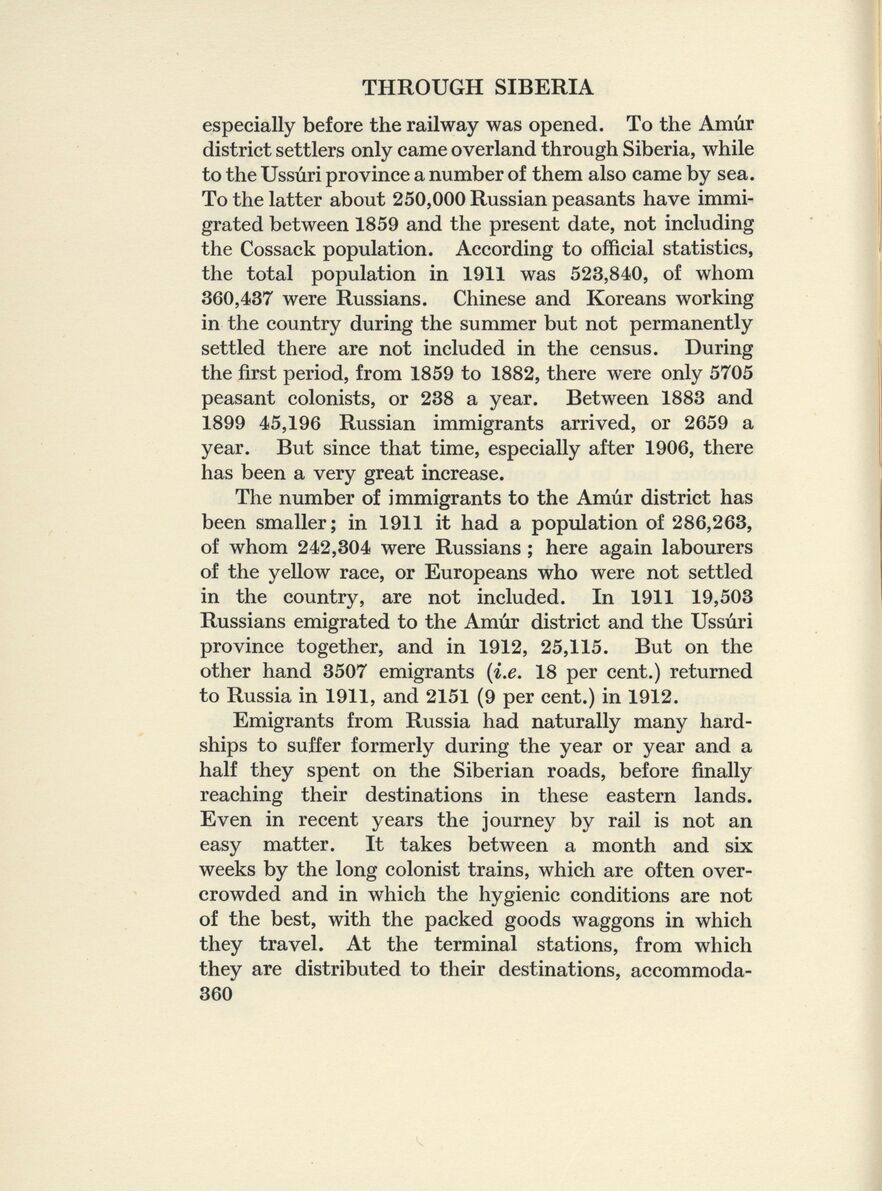
Full resolution (JPEG) - On this page / på denna sida - XVI. Russia in the east. The yellow question

<< prev. page << föreg. sida << >> nästa sida >> next page >>
Below is the raw OCR text
from the above scanned image.
Do you see an error? Proofread the page now!
Här nedan syns maskintolkade texten från faksimilbilden ovan.
Ser du något fel? Korrekturläs sidan nu!
This page has never been proofread. / Denna sida har aldrig korrekturlästs.
THROUGH SIBERIA
especially before the railway was opened. To the Amiir
district settlers only came overland through Siberia, while
to the Ussuri province a number of them also came by sea.
To the latter about 250,000 Russian peasants have immi
grated between 1859 and the present date, not including
the Cossack population. According to official statistics,
the total population in 1911 was 523,840, of whom
360,437 were Russians. Chinese and Koreans working
in the country during the summer but not permanently
settled there are not included in the census. During
the first period, from 1859 to 1882, there were only 5705
peasant colonists, or 238 a year. Between 1883 and
1899 45,196 Russian immigrants arrived, or 2659 a
year. But since that time, especially after 1906, there
has been a very great increase.
The number of immigrants to the Amiir district has
been smaller; in 1911 it had a population of 286,263,
of whom 242,304 were Russians ; here again labourers
of the yellow race, or Europeans who were not settled
in the country, are not included. In 1911 19,503
Russians emigrated to the Amiir district and the Ussuri
province together, and in 1912, 25,115. But on the
other hand 3507 emigrants (i.e. 18 per cent.) returned
to Russia in 1911, and 2151 (9 per cent.) in 1912.
Emigrants from Russia had naturally many hard
ships to suffer formerly during the year or year and a
half they spent on the Siberian roads, before finally
reaching their destinations in these eastern lands.
Even in recent years the journey by rail is not an
easy matter. It takes between a month and six
weeks by the long colonist trains, which are often over
crowded and in which the hygienic conditions are not
of the best, with the packed goods waggons in which
they travel. At the terminal stations, from which
they are distributed to their destinations, accommoda
-360
<< prev. page << föreg. sida << >> nästa sida >> next page >>